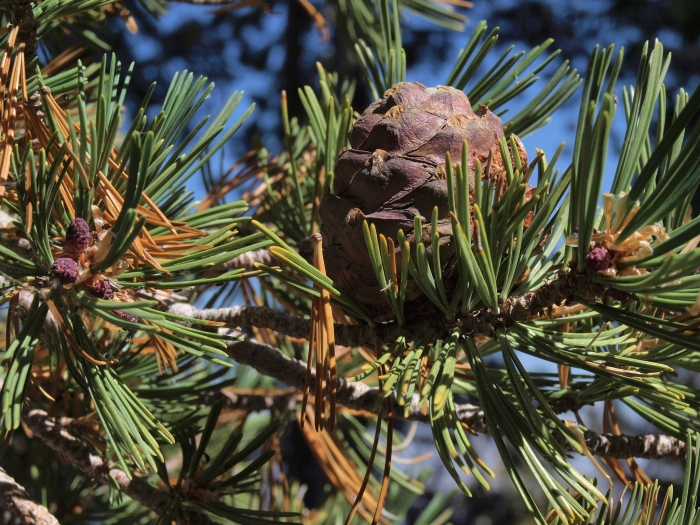Whitebark Pine
(Pinus albicaulis)
Whitebark Pine (Pinus albicaulis)
/
/

Jim Morefield
CC BY 4.0






















































Estimated Native Range
Summary
The Whitebark Pine is valued for its resilience and its ecological role in high-altitude ecosystems. It provides food and habitat for wildlife, including the Clark’s Nutcracker, which is essential for seed dispersal. The tree’s ability to grow in poor soils and withstand cold temperatures makes it suitable for restoration projects and as a specimen in rock gardens and naturalized areas. It requires full sun and well-drained soils, and once established, it is relatively low maintenance. However, Whitebark Pine is susceptible to white pine blister rust, mountain pine beetle attacks, and climate change impacts, which are significant threats to its survival. Conservation efforts are crucial for this species, and gardeners are encouraged to plant rust-resistant cultivars to aid in its preservation.CC BY-SA 4.0
Plant Description
- Plant Type: Tree
- Height: 40-60 feet
- Width: 15-25 feet
- Growth Rate: Slow
- Flower Color: N/A
- Flowering Season: Non-Flowering
- Leaf Retention: Evergreen
Growth Requirements
- Sun: Full Sun
- Water: Medium
- Drainage: Fast, Medium
Common Uses
Bee Garden, Bird Garden, Deer Resistant, Drought Tolerant, Edible*Disclaimer: Easyscape's listed plant edibility is for informational use. Always verify the safety and proper identification of any plant before consumption., Fragrant, Low Maintenance, Rabbit Resistant, Rock Garden
Natural Habitat
High-elevation environments such as alpine and subalpine zones in the Western United States, particularly in the Sierra Nevada, Cascade Range, and Northern Rocky Mountains
Other Names
Common Names: Alpine Whitebark Pine, White Bark Pine, Pitch Pine, Creeping Pine, Scrub Pine, White Pine, Weißstämmige Kiefer, Pino Albicaule
Scientific Names: , Pinus albicaulis, Pinus flexilis var. albicaulis, Apinus albicaulis, Pinus flexilis subsp. albicaulis, Pinus shasta,
GBIF Accepted Name: Pinus albicaulis Engelm.